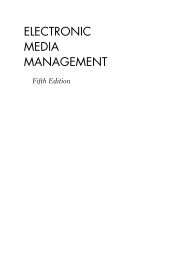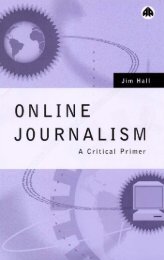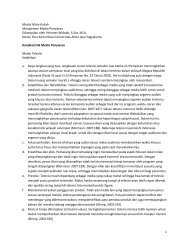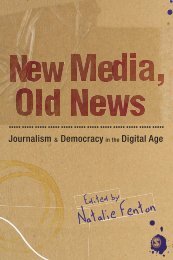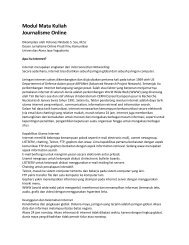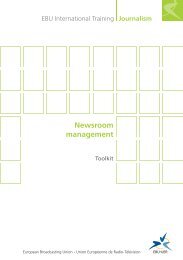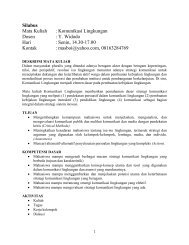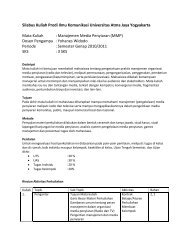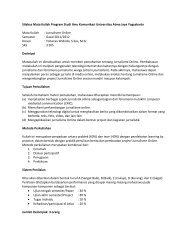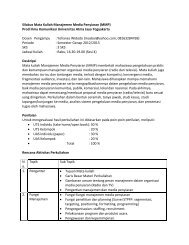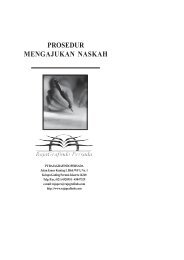1What is online journalism? - Ayo Menulis FISIP UAJY
1What is online journalism? - Ayo Menulis FISIP UAJY
1What is online journalism? - Ayo Menulis FISIP UAJY
You also want an ePaper? Increase the reach of your titles
YUMPU automatically turns print PDFs into web optimized ePapers that Google loves.
The core journal<strong>is</strong>m 53<br />
demonstrate fear. However, nor should they try to blind their<br />
interviewee with their brilliance and knowledge. Often a slightly<br />
diffident approach, underpinned with a thorough understanding,<br />
can work wonders. ‘Th<strong>is</strong> might seem like a stupid question . . .’<br />
should be the preamble to your most inc<strong>is</strong>ive enquiry. It’s known<br />
as the ‘Columbo’ school of questioning perfected by Peter Falk in<br />
the 1970s TV police series. Each week he would interview<br />
suspects, feigning ignorance to gain knowledge. Young journal<strong>is</strong>ts<br />
sometimes invert th<strong>is</strong> process, with the inevitable d<strong>is</strong>astrous<br />
consequences.<br />
Observational and empathetic technique<br />
Feature writers for newspapers, in particular, will employ a range<br />
of interview techniques that go beyond the core tasks of gathering<br />
news, information and views. These techniques can be applied in<br />
other media, including <strong>online</strong>.<br />
Feature writers often place much emphas<strong>is</strong> on exploring the<br />
character and circumstance of the interviewee, namely who are<br />
they and what makes them tick. So as well as concentrating on<br />
what they say and hear, these journal<strong>is</strong>ts also rely on what they<br />
see. Such observational reporting also complements a narrative<br />
writing style.<br />
Feature writers often choose to interview someone at home or<br />
in the workplace because these surroundings will tell them much<br />
about the person and help them paint a more vivid picture.<br />
Photographs, mementoes, even books in a room, can all reveal<br />
new insights and spark off fresh lines of questioning.<br />
They will also take time to build up a rapport with the<br />
interviewee. They will check details, demonstrate their desire to<br />
get a true picture and even share experiences. Th<strong>is</strong> can make it<br />
easier to ask the interviewee to relive events and explore<br />
emotions without having to employ that most crass of questions,<br />
when used in <strong>is</strong>olation, of ‘How do you feel?’.<br />
Th<strong>is</strong> technique <strong>is</strong> not like the hurried news interview. It needs<br />
to be face-to-face and usually takes time. Journal<strong>is</strong>ts should always<br />
act with sensitivity, sincerity and integrity; but these qualities are<br />
in particular demand in these interviews. The journal<strong>is</strong>t <strong>is</strong> asking<br />
the interview subject to provide the raw material for a story that



